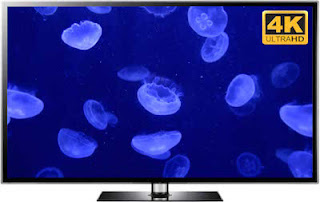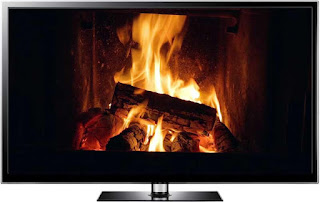TV Screensaver
Find the best 4K TV screensavers. 4K virtual fireplace, nature and aquarium scenes to download for a 4K SMART TV.
Sunday, December 7, 2025
Fireplace Screensaver Videos - Loop All Day this Christmas. Download and...
Tuesday, November 19, 2024
Free Aquarium Screen Saver Windows 10
Uscenes is offering a 100% Free aquarium screen Saver for windows 10, which will work on other versions of Windows too. Probably not the stripped down version used on some tablets and other basic devices.
The free aquarium screen saver for Windows 10 can be downloaded at Uscenes.com
LPS Reef Fish Tank Video Free in Full HD 1080p Resolution. Free aquarium screensaver for Windows 10 PCs and laptops. Just download and install with a couple of left clicks..png) |
| Free aquarium screensaver Windows 10 |
If anyone has any issues please let me know. It will work on Windows 10 and 7, and we haven't heard of any issues with Windows 11, so it should be fine. It has independent volume control from your computer.
Here is a preview of the Free Windows 10 aquarium screen saver:
Thursday, November 14, 2024
Best 4K TV Screensavers for 2025
Best 4K TV Screensavers for 2025
1. Coral Garden by Uscenes.
With over 2 million Youtube views, this very colorful aquarium has become the best 4K aquarium video online. The situation with Uscenes is that they offer 6 versions of their videos: a 20 minute video for 4K or HD TVs and a 3 minute self-looping screensaver for Windows and Mac laptops and PCs. The videos are meant to be played with the Repeat button selected, so that you have a 4K virtual aquarium loop as long as you like. See Uscenes reviews on Software Informer where this was chosen as a top pick.
2. 4K Jellyfish Aquarium by Uscenes
You know a video is great when it shows up on a major TV series on massive screens. In the hit show Pure Genius this video has been licensed and is shown on enormous futuristic screens, proving that the 4K resolution is capable of being shown on even the biggest UHD SMART TV screens.
3. 4K Fireplace by Uscenes
This simple fireplace video fills your TV with flames. It has been a top seller because of the simple but classy flames and brass frame. This is great at Christmas and Uscenes have also been adding a 3 and a 4 hour long Christmas Fireplace video on Vimeo.
4. The Ocean Tank by Uscenes
This enormous aquarium is like being underwater in a rich ocean habitat. There are multiple types of sharks in this stunning 4K shark tank. Plus beautiful manta rays who appear to be floating through the scene like giant underwater birds. There are also some pretty cool big fish in this masterpiece of an aquarium. If you have a super big screen this one will be amazing.
5. Nature Relaxation Journey 2 by Nature Relaxation
David Huting always produces superb scenery videos and this 2016 release is a great example. Unlike Uscenes who use simple sounds to match their single scenes, David adds music and combines multiple videos in his TV screensavers.
6. Deep Space Relaxation by Nature Relaxation
Nature Relaxation have also managed to get some amazing NASA footage for fans of outer space. This is for all the sci-fi fans out there and those who love seeing Mother Earth from space.
7. Marina Bay Night by Uscenes
This lovely 4K Cityscape is a UHD recording of Dubai at night. It was released at the end of last year, but I had to include it to give our collection of the best 4K TV screensavers of 2024 a well rounded choice.
Monday, March 20, 2023
Insomnia Help Videos new YouTube channel
Uscenes has created a new Insomnia Help Videos YouTube channel. The channel was created to provide insomniacs with a chance to fall asleep easily with ad-free sleep aid videos.
 |
| Cover of The Insomnia Key extended version. |
One of the best insomnia help videos on YouTube
View the extended version of Uscenes popular sleep aid video The Insomnia Key below:
Monday, February 14, 2022
Can I use a screensaver on my 4K SMART TV?
Yes you can. However, they will not come on automatically like on your computer. Only in-built screensavers like time-lapse videos will come on automatically. TV screensavers need to be played manually. They are ideal as waiting room videos where you can leave a fish tank looping all day. You can buy a single aquarium video for waiting rooms from Uscenes now.
How to get a screensaver on my 4K SMART TV?
- Download or create a video in 4K UHD resolution, ideally with surround sound.
- Add the video to a USB flash drive and plug in to your 4K SMART TV.
- If you don't see a pop-up select source and you will be able to select the USB drive.
- Play a video and set it to Repeat for it to continue looping for as long as you wish.
- Or you can add multiple videos and there is usually a "Repeat All" option to rotate through them.
Where can I buy a 4K SMART TV screensaver?
Simply visit Uscenes.com or Uscenes.gumroad.com and choose from 100 4K screensaver videos split up into aquariums, fireplaces and scenery.
Uscenes traditionally makes 20 minute videos to be looped, but have recently started offering longer videos at the 2nd link.
You may find other sites to download videos, but be wary of free ones. Sometimes they want to install invasive software on your PC which may have spyware. Uscenes filmed all their videos and are well worth the money.
Uscenes also make Windows screensavers which start from just $5. All the videos at Uscenes.com have the option of downloading an MP4 SMART TV screensaver, or a Windows screensaver (or "screen saver" as Windows likes to call them).
Visit youtube.com/user/uscenes/videos to view all the screensaver available. They work on all brands of 4K SMART TVs like Samsung, LG, Sony, Hisense, TCL, Panasonic, Sharp etc.. Below is the most popular aquarium video (pictured above) called Coral Garden. Turning my TV into a fish tank is easier than you think with Uscenes videos.
Wednesday, December 24, 2014
Get a Christmas Fireplace for your TV
To watch these you can find some long ones on Youtube, some even as long as 3 hours. But I prefer to download the ones from Uscenes which are only 20 minutes, but higher quality.
The idea is to just let the repeat all day continuously. I found an example from Uscenes' Facebook page which I follow below. Click image if you want to go to their site and see the fireplace videos, which also come with computer screensaver versions which self loop.
 |
| Fireplace video on Xmas Day |
Update 2016: Uscenes now creates 4K UHD relaxation videos and screensavers. for their selection of fireplaces click here--> Fireplace Screensavers and look out for the ones with the yellow 4K logo. 4K TV screensavers are rare, but Uscenes have a great selection including aquariums and scenery.
Tuesday, June 3, 2014
Why Don't TV Screensavers Exist Yet?
What is the alternative?
For now your only option is to loop a video on your screens. People like Uscenes.com are supplying these videos which can then be played on media players such as iTunes and streamed to a TV through a box like the Apple TV. It is not an ideal solution but it is a good stop gap for now.
Is it easy to make these videos to use as a TV screensaver?
Actually it isn't too difficult. Most of us now have smartphones with HD video recording capabilities. These devices won't create crystal clear images like Uscenes make, but at least you can create your own TV screensavers. Best Lens for taking photos: Fujifilm 50mm f2 Vs Viltrox 56mm f1.4
How to make your own TV screensaver video
1. Firstly you will need a tripod or some other contraption to keep your camera or smartphone steady. TV screensavers look best when the camera does not move, giving you the illusion of a window to another place.2. Set your camera's video setting to full HD 1080p. 1080p will give you the largest size image which is regarded as full HD. If you don't have a 1080p option go with 720p or 1080i.
3. Find a subject to film. This could be anything you find attractive such as a fish tank, fire, river or animals. You want to make sure that there is something moving though otherwise you may as well just use a photo.
4. Record for a few minutes. The idea is to loop the videos to play forever, so you want a scene with movement which won't look odd when it repeats. If the loop point isn't smooth then make a longer video so you have loop points less often.
5. Edit the footage using a video editing software. There are free and paid versions available, those using IOS can use iMovie which is free for anyone who has bought an Apple product fairly recently. Be sure to export the file in a format your media player can play e.g. MP4/H264
6. Load the video into your media player (make sure you use one with loop/repeat function) and stream it to your TV. If you don't have a media streamer you can connect your computer or laptop to your TV with a cable. If you don't have a media player/streamer then you can burn the files to disk, just remember that DVD (720) is lower in quality to Bluray (1080) and these are dying out.
What type of camera is best to use for these videos?
If you are prepared to buy a new camera the best option is to avoid camcorders as they do not have the capabilities of DSLR and mirrorless cameras. Camcorders are designed for using on the move with powerful zooms. They have small sensors and the ones under $1,000 will not give cinematic looking images.
DSLR cameras produce the best video. These are the ones which most photographers use. For around $500 you can get a basic Canon DSLR. For a little extra you can get a mirrorless camera with the same capabilities such as the Sony Nex line. These are more compact which is important to many. If portability is important then the best point and shoot camera is the Sony RX100 which ranges from $500 to $750. This one will fit in your pocket and do a really good job with video.
The important thing to remember is that the best camera is the one you have with you. So don't worry too much about needing to buy a new one at first. Just get out there and get shooting. Then if your device doesn't produce a crisp image on your TV you can think of upgrading later. Video editing software allows you to add extra sharpening to video as well as tweaking the colors.


